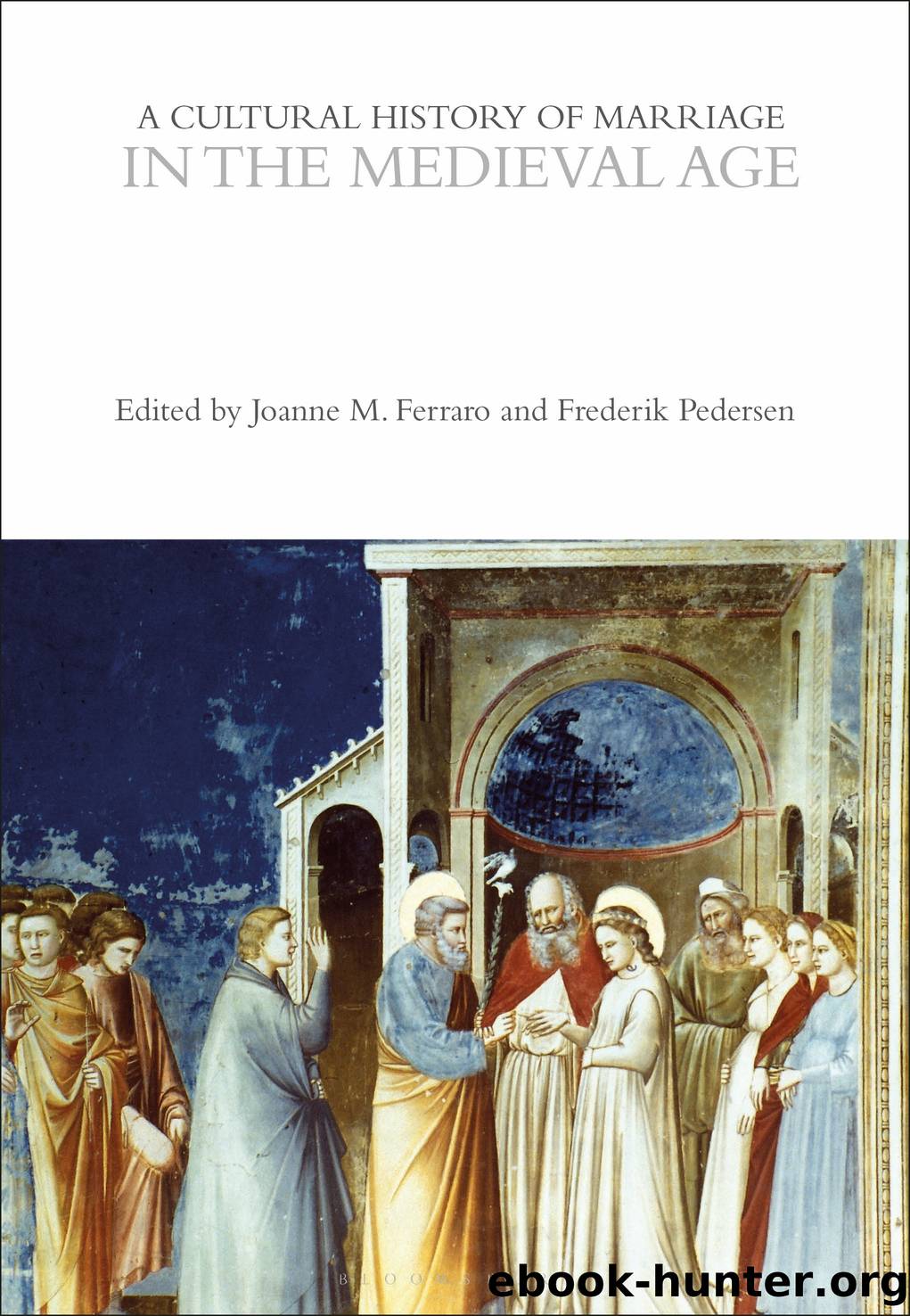A Cultural History of Marriage in the Medieval Age by Joanne M. Ferraro;Frederik Pedersen;

Author:Joanne M. Ferraro;Frederik Pedersen;
Language: eng
Format: epub
Publisher: Bloomsbury UK
Published: 2021-04-15T00:00:00+00:00
FIGURE 5.2 Master of the City of Ladies, 1400â1415, Bibliothèque nationale de France, The Yorck Project (2002) Courtesy of Wikimedia Commons.
FIGURE 5.3 Daily Life, Eve Spins Wool and Adam Ploughs, c. 1475â1550. © Photo: Kirsten Trampedach, 2010. National Museum of Denmark, Creative Commons (CC BY-SA).
FIGURE 5.4 Eve spins wool. © Photo: Kirsten Trampedach, 2010, National Museum of Denmark, Creative Commons (CC BY-SA).
Smaller households also benefited from gradual shifts in inheritance practices during the twelfth to fourteenth centuries. Two areas contributed to this change: an increasing number of regions abandoned or diluted the inheritance rules of primogeniture (under which the oldest son took possession of the family lands) in favor of partible inheritance (under which all heirs took possession of a part of their familyâs possessions) and a wholesale change took place in the nature of feudal rents, which increasingly were paid in money rather than in kind. An increasing number of landholders saw fit to endow their younger sonsâand often also their daughtersâwith smaller parcels of land which could form the nucleus around which sons could build larger land-holdings by selling or exchanging their lands for money or fields with better soils. This development is seen most clearly in patterns of English land tenure, but it is clear from the manner in which Scandinavian law codes separate categories of land into patrimony and âbought landsâ that such changes were not limited to England. This development of a pattern of smaller land-holdings encouraged the formation of smaller but more intensively managed households and a more active market in land. Chesterton in Cambridgeshire, where one-sixth of sons purchased land during the lifetime of their fathers, is an example of the increasing flexibility in land transfer.38
In rural areas the performance of daily tasks, for example, raising crops, producing textiles, and making clothing, were performed by family members and split along gender lines.39 Among the rural population, married women looked after the familyâs pigs and poultry and tended the familyâs orchard, a plot of land near the house where the family grew useful domestic produce, such as apples, kale, and even wheat. Married women also produced for consumption outside the family: eggs, cured meats, bread, and other domestic produce that was abundant enough to be sold at local markets, and brewing ale was virtually a female monopoly.40
The simultaneous development of urban centers of industrial production and a rural hinterland with strong market-oriented manufacturing combined with an increased access to cash to allow women to take a more active (or at least a more visible) role in manufacture and trade.
The interpretation of the voluminous material produced by medieval city authorities has been the subject of many, varied studies. Merry Wiesner attributed the decreased visibility of women in early modern sources to cultural factors: womenâs lack of skill and education, and an increased competition from men who refused to work alongside women, combined with the new moral concerns of the Reformation to push out women from the labor market.41 Martha C. Howell, on the other hand,
Download
This site does not store any files on its server. We only index and link to content provided by other sites. Please contact the content providers to delete copyright contents if any and email us, we'll remove relevant links or contents immediately.
Nudge - Improving Decisions about Health, Wealth, and Happiness by Thaler Sunstein(7255)
iGen by Jean M. Twenge(5166)
The Fire Next Time by James Baldwin(5024)
Adulting by Kelly Williams Brown(4239)
The Hacking of the American Mind by Robert H. Lustig(4092)
The Sports Rules Book by Human Kinetics(4079)
The Ethical Slut by Janet W. Hardy(4042)
Captivate by Vanessa Van Edwards(3732)
Mummy Knew by Lisa James(3522)
In a Sunburned Country by Bill Bryson(3374)
The Worm at the Core by Sheldon Solomon(3327)
Ants Among Elephants by Sujatha Gidla(3282)
Suicide: A Study in Sociology by Emile Durkheim(2906)
The Slow Fix: Solve Problems, Work Smarter, and Live Better In a World Addicted to Speed by Carl Honore(2843)
The 48 laws of power by Robert Greene & Joost Elffers(2816)
Humans of New York by Brandon Stanton(2690)
Handbook of Forensic Sociology and Psychology by Stephen J. Morewitz & Mark L. Goldstein(2604)
The Happy Hooker by Xaviera Hollander(2586)
The Tipping Point by Malcolm Gladwell(2563)
